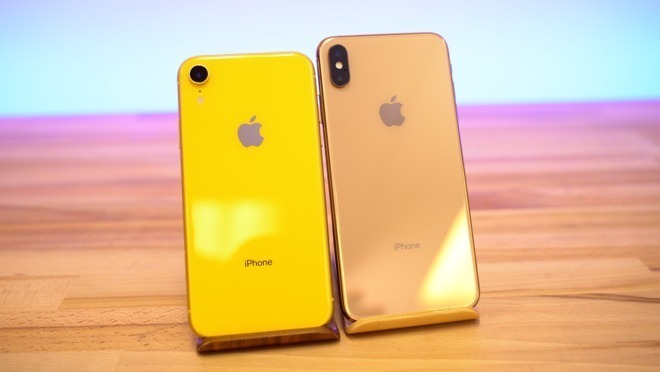Apple saw the biggest decline in smartphone sales in the fourth quarter of 2018 out of all major device vendors, according to Gartner's analysis of the global smartphone market, with the iPhone's reduced sales also causing Apple's market share to diminish compared to the same period in 2017.
Apple's holiday quarter results revealed iPhone revenue was down 15 percent compared to last year, but unit figures were not provided by the company under its new reporting policy. According to data produced by Gartner, the number of units did go down but at a lower percentage of 11.8 percent, which is believed to be the worst quarterly decline for the company since the first quarter of 2016.
Gartner claims iPhone unit sales reached 64.5 million in the quarter, down from 73.2 million in the fourth quarter of 2017. For 2018 as a whole, iPhone sales are reportedly down 2.7 percent, resulting in a total of just over 209 million units.
The double-digit decline for the quarter is said to be the worst among the top five global smartphone vendors, with Samsung and Xiaomi seeing smaller reductions while Huawei and Oppo enjoying year-on-year growth. In terms of market share, Apple maintained its position of second place, but saw its position weaken from a 17.9 percent share in Q4 2017 to 15.8 percent of the market in Q4 2018.
As a whole, the entire smartphone market did see some growth from last year, but by barely 0.1 percent. In Q4 2018, the total units across all vendors reached 408.4 million, marginally up from the 40.8 million saw in the same period in 2017.
It is believed Apple saw weaker iPhone demand in most regions, with the exception of North America and mature Asia-Pacific markets. Greater China saw the biggest declines, with market share dropping year-on-year from 14.6 percent to 8.8 percent.
"Apple has to deal not only with buyers delaying upgrades as they wait for more innovative smartphones, but it also continues to face compelling high-price and mid-price smartphone alternatives from Chinese vendors," advised Gartner senior research director Anshul Gupta. "Both these challenges limit Apple's unit sales growth prospects."
For the full year of 2018, Apple's 209 million units puts it in second place, again behind Samsung, but it may not be that way for long. Huawei saw a massive 52 million-unit increase in sales between 2017 and 2018, bringing its full-year total to 202.9 million, bringing it close to Apple and within rage of overtaking the iPhone producer if sales trends continue on their present course.
Global smartphone sales is believed by many analysts to have slowed down for some time, with 2019 shaping up to be a tough year for some vendors. According to Credit Suisse, smartphone production in the first quarter is forecast to fall to a level last observed in 2013.
 Malcolm Owen
Malcolm Owen








-m.jpg)






 Charles Martin
Charles Martin
 Christine McKee
Christine McKee
 Wesley Hilliard
Wesley Hilliard

 Andrew Orr
Andrew Orr
 William Gallagher
William Gallagher
 Sponsored Content
Sponsored Content







10 Comments
A few things to note:
Apple reported 75 million new iPhone users. So iPhone overall rose.
More people in developing countries can only afford 100 buck knockoffs which helped Sammy.What Apple needs to do is heavily show people that old iPhones are available at a cheaper price. I can't count how many people think ONLY the latest iPhones are for sale, which makes the "iPhone is too expensive" meme ridiculous.
Consider iPhone 6s is still faster than almost all knockoffs at the same price point.